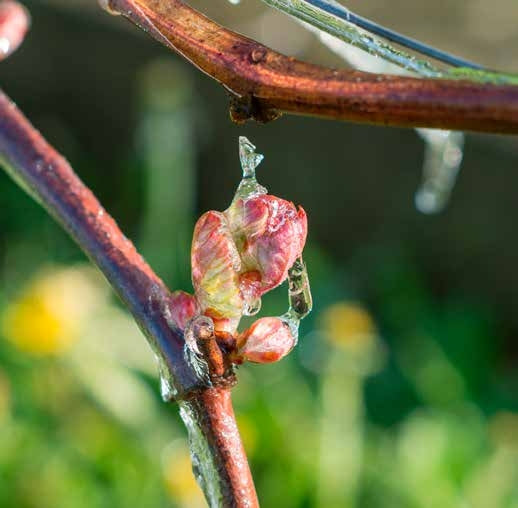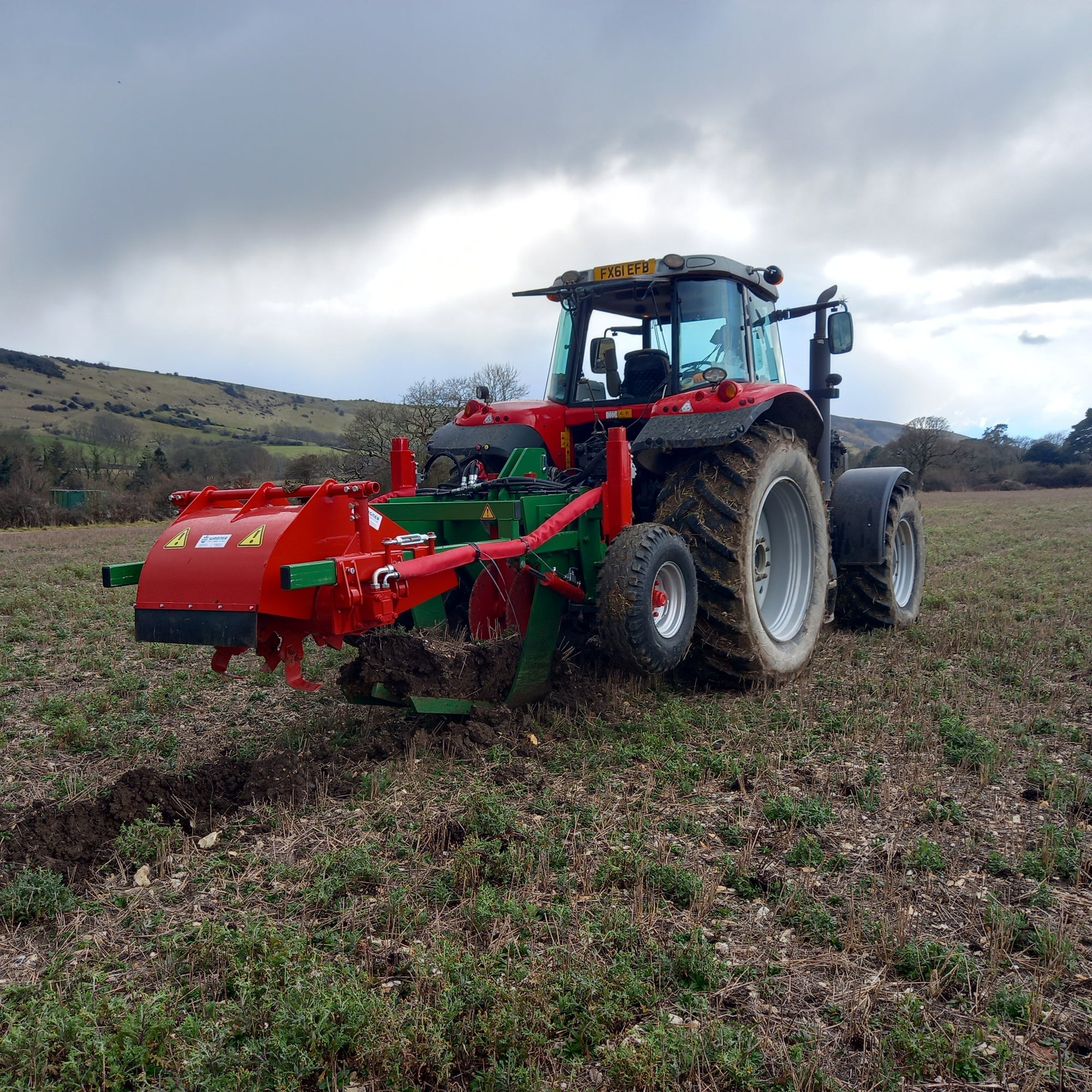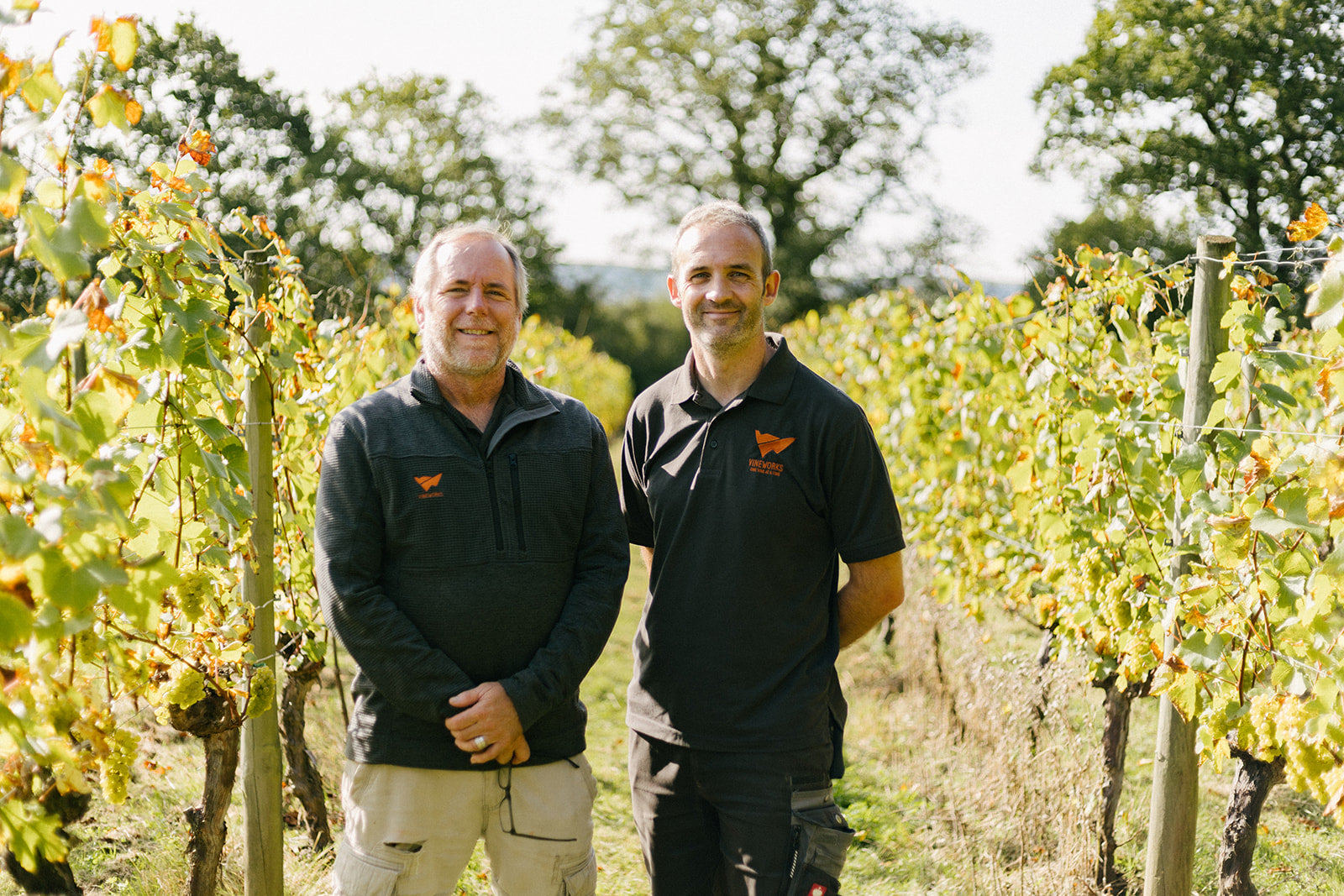

FROST PROTECTION
The good news is, unless you live in Canada with sustained winter temperatures of -20C, the vines will not die. The bad news: spring frosts are becoming more frequent as we experience ‘’unseasonal springs’’ which bring about early bud development. The straightforward mitigation is to avoid planting vines in areas where cold air can accumulate.
It has been said that weather forecasting gets it wrong 60% of the time, so if you take the opposite of the weather forecast, you are more likely to be correct. With the advance in weather modelling and computer algorithms, these predictions are now exceedingly accurate. However, these predictions are not always a correct indication of what will be happening on a microclimate level within your specific site. This comes down to the temperature on/around the fruiting wire where the buds for the current season’s growth are laid.
Having data from your own weather station (ideally before planting) to guide your decision-making process is vital. This will help you ascertain high risk areas and understand the incidences and severity of the cold air that ordinarily accumulates there. You can then determine the frost protection methods that will be most effective in each vineyard area.
Frost mainly occurs in two iterations: radiation frost and advection frost. Radiation frost occurs on those calm, clear nights when the heat from the ground radiates upward. An inversion layer develops as the cold air stays low and the ground loses heat. The heavier cold air settles in the lower parts of the site where it cannot escape and, depending upon accumulation, can potentially roll back uphill. The lowest temperatures on these events occur in the final few hours before sunrise. This type of frost is where pre-emptive measures can effectively prevent crop damage.
Advection frost occurs when strong winds blow a sizeable mass of cold air across the country. This mass of cold air is usually uniform from ground level to several hundred metres above with no identifiable inversion layers. This makes preventative measures limited or ineffective – probably best to take a deep breath and sit down with a whisky!
There are numerous machines and tools that can help mitigate frost damage. These include frost candles, mobile and static frost guards, wind fans, heated cables, sprays, sprinklers and cold air drains. With fuel prices and production costs soaring, these are a significant investment.
Rather than rushing out to buy the latest technology straight away, there are things we can do in the vineyard that are preemptive, cost-effective and can have a significant effect.
◆ Identifying ‘’frost pockets’’
Ideally done before planting using cold air accumulation models or by simply visualizing how frost could run through and away from the vineyard. Often, there are hedges, trees, vegetation or even walls that prevent cold air from flowing away. Preferably there would be no obstructions for the frost to flow away.
◆ Tidy mowing
Keep low-lying headlands and alleyways mown as tightly as possible to allow for the frost flow.
◆ Install windbreaks
If the frost is flowing down from the field above, try and divert it to either side of your vineyard using artificial wind barriers.
◆ Delay pruning
Pruning later in the season delays budburst, so if a frost eventually occurs, bud development (and subsequently damage) will be limited.
◆ Sacrificial canes
If you are pruning in a double guyot system, consider adding a third upright sacrificial cane. This can suppress budburst and, if the laid down canes do get frosted, can act as a replacement, increasing the number of potentially viable buds.
◆ Data analysis
Make sure you are making decisions using the correct data. Ensure the temperature sensor is in the coldest place in the vineyard, at the same height above ground as the buds and can measure wet bulb temperature – and don’t forget to turn on the alarm system!
VineWorks has worked with Meteos UK for several years to provide weather station solutions for our customers and aid accurate decision-making, both pre-planting and ongoing. Understanding all aspects of your vineyard affords you the best frost protection possible: knowledge.



